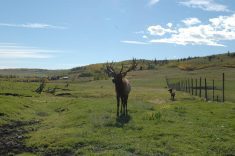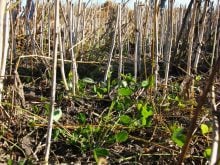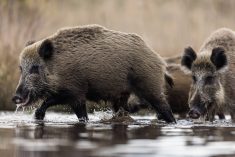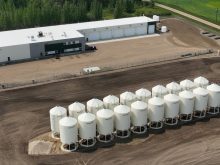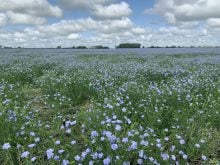WINNIPEG — Forage supplies are starting to dwindle across Western Canada following a long, cold, winter, and rain is needed soon to make for a good forage crop this year.
“People tended to kind of blend hay this year and they managed to get through. But the prolonged cold spring really, I think, put a lot of pressure on feed supplies,” said Terry Kowalchuk, provincial forage specialist with Saskatchewan Agriculture.
Provincial crop reports in Manitoba, Saskatchewan and Alberta show producers are facing tight supplies. The April 30 crop report from the Saskatchewan Ministry of Agriculture said producers have been forced to feed their livestock alternative feed sources and feedgrains while they wait for the pastures to green up.
Read Also

Using artificial intelligence in agriculture starts with the right data
Good data is critical as the agriculture sector increasingly adopts new AI technology to drive efficiency, sustainability and trust across all levels of the value chain.
There is also concern about winterkill in pastures. According to Glenn Friesen, an industry development specialist with Manitoba Agriculture, there isn’t yet a strong indication of just how much winterkill there is.
“We expect it to be a touch higher than normal, and we’ve had a fairly dry and warm spring and we know producers are getting cattle in the pastures,” he said.
Although grass is starting to grow in pastures, there is concern that due to tight forage supplies producers could be forced to send livestock out to pasture earlier than usual.
“Putting (the cattle) out early has kind of a double whammy. It does (hold) back the potential (pasture quality) by quite a bit, that’s the problem, especially in a dry year like this,” Kowalchuk said.
While the forage situation isn’t looking the best in Manitoba and Saskatchewan, the May 8 crop report from Alberta Agriculture said hay and pasture conditions had improved following warm temperatures and precipitation across the province.
In the drier portions of the Prairies, there has been concern about grass fires ruining pasture and hayland for the year. Many large fires have been reported across the provinces.
“That’s affecting fence posts, that’s affecting fences, and so the ability for a producer to use that piece now becomes an issue,” Friesen said.
“Even if the grass does grow back, there’s lots of work to be done to rebuild it.”
The dry spring could also affect this year’s forage crops.
Kowalchuk said the yield potential for forages depends on precipitation received in May. However, due to the late spring, Kowalchuk said the province is two weeks behind where it regularly is for this time of year.
“If we got rain late May, early June, I think we’d still be OK, but we could definitely use a good two to three day soaker right now for sure, province wide,” he said, adding it isn’t at a critical point yet.



